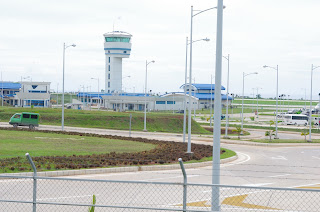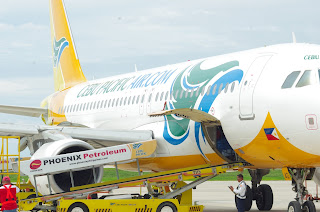The Japanese surrendered to the American and allied Forces on September 2, 1945, which formally ended the war. A year later, an election was held on April 1946 that resulted to the election of Manuel Roxas as president. Three months later, on July 4, 1946, the United States granted independence to the Philippines thus ending the country’s commonwealth status.
In Cagayan de Misamis, in the aftermath of the war and the granting of the country’s independence, the municipality went through the process of rehabilitation and reconstruction of damaged infrastructures. Government institutions had to be re-established. Local government officials at that time saw the need to elevate Cagayan to a city Status. In this regard, the municipal council created a three-man committee led by treasurer Maximo Suniel to promote the conversion of Cagayan into a chartered city. Relative to that move, Pedro Baculio who was the congressman of Misamis Oriental sponsored bill 2829 for that purpose. In 1948, President Roxas died of a heart attack and Vice President Elpidio Quirino took over as president who then appointed Maximo Suniel as Mayor of Cagayan.
The term of the first congress expired in 1949 with the bill not yet enacted into law. Emmanuel Pelaez who succeeded Pedro Baculio as the representative in Misamis Oriental worked for the passage of bill in congress. The bill was signed into law by President Quirino on June 15, 1950. Cagayan de Misamis became a chartered city by virtue of R. A. 521. Immediately after the signing, the president sworn in Maximo Suniel as the mayor of the newly created city. The word “Misamis” was removed from the name and in its place was the Spanish word “Oro” which means gold. Oro was an appropriate word addition because Cagayan River is known for the presence of gold sediments and nuggets as well as the hospitable and friendly dispositions of the residents which are considered as golden traits. Thus, the official name of the newly charted city was Cagayan de Oro. The signing of the charter was 4 years after the Philippines independence and 5 years after the war.
The distinguished gentlemen behind R. A. 521:
Maximo Yparraguirre Suniel was born in Carascal, Surigao on November 18, 1898. At age 24, he became the municipal treasurer of Mambajao, Camiguin. He moved to Cagayan de Misamis as a municipal treasurer on January 24, 1924. When war broke out, he joined the resistant movement against the Japanese. After the war he was given back his job as a treasurer. On September 25, 1947, the municipal council created a three-man committee to work for the conversion of Cagayan into a city. In 1948 he was appointed as the mayor of Cagayan. Upon the signing of President Quirino of R. A. 521 of the city’s charter, the president immediately sworn in Maximo Suniel as the mayor of the new city. Thus, Maximo Suniel was the last mayor of Cagayan de Misamis, and the first mayor of Cagayan de Oro City.
Pedro Salvador Baculio, a lawyer, was born on October 19, 1909. He was the acting governor of Misamis Oriental on August 1, 1945, which at that time included the island of Camiguin and Cagayan de Misamis. He represented the province in the first congress from 1946 to 1949. In Mar 1953 he was the appointed mayor of the new city of Cagayan de Oro. The loss of President Quirino that he supported in the election of 1953 cut short his stint as Mayor in December 1953. As a congressman, he was responsible for sponsoring a bill in 1948 to convert the municipality of Cagayan de Misamis into a City.
Emmanuel Neri Pelaez was born on November 30, 1915, in Medina, Misamis Oriental. He topped the 1938 bar exam with a rating of 91.3%. He succeeded Rep Baculio as the Misamis Oriental representative in congress on December 30, 1949. In that capacity he worked for the passage of the bill filed by Rep. Baculio. Pelaez’ effort helped in the signing of the bill to become R. A, 521 that converted Cagayan into a chartered city. In the 1953 election he ran for senator and won. In the 1959 election, he won as vice president in tandem with Diosdado Macapagal who was elected president. In the Macapagal administration, Pelaez was also appointed as Secretary of Foreign Affairs. His differences with Macapagal caused his resignation of the post, and he later transferred to the Nacionalista Party where he made himself available as its presidential nominee. During the party convention to select the party candidate for president, Senate President Ferdinand Marcos Sr. who topped the bar in 1939, bolted the Liberal Party to join the Nacionalista and challenged Pelaez in the presidential nomination. In the convention marred with allegations of coercion and vote buying Marcos defeated Pelaez as the party’s presidential candidate. In the election that followed Marcos defeated Macapagal to become the new president of the Philippines. After his vice presidency, Pelaez served as a congressman, as a senator and as a member of Batasan Pambansa in the Martial law period. During president Corazon Aquino’s term of office, he was appointed as the Ambassador to the United States in 1986.
Pelaez was one of the most popular political personalities in the Philippines at the prime of his political career. He was an admired and beloved figure of the people of Cagayan de Oro and Misamis Oriental who fondly called him “Maning. He was the first person in Mindanao to top the bar exam. He was also the first politician from Mindanao to become vice president of the Philippines. His ambition to become the President of the Philippines was within a hair’s breadth had Ferdinand Marcos Sr. not seized from him that opportunity.























































